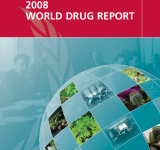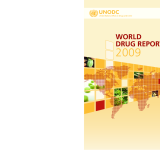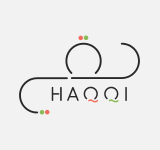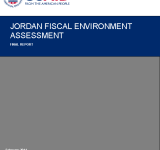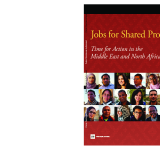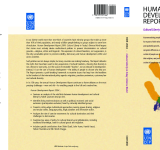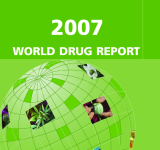The World Drug Report presents comprehensive information on the illicit drug situation. It provides detailed estimates and trends on production;; trafficking and consumption in the opium/heroin;; coca/cocaine;; cannabis and amphetamine-type stimulants markets. The drug problem is being contained but there are warning signs that the stabilisation which has occurred over the last few years could be in danger. Notable amongst these is the increase in both opium poppy and coca cultivation in 2007;;some growth in consumption in developing countries and some development of new trafficking patterns. There have also been encouraging contractions in some of the main consumer markets. This year;; almost one hundred years since the Shanghai Opium Commission in 1909;; the Report presents an historical review of the development of the international drug control system.
Middle East
The World Drug Report presents comprehensive information on the illicit drug situation. It provides detailed estimates and trends on production;; trafficking and consumption in the opium/heroin;; coca/cocaine;; cannabis and amphetamine-type stimulants markets. This 2009 report;; for the first time includes special feature sections on the quality of drug data available to UNODC;; trends in drug use among young people and police-recorded drug offences. It also discusses one the most formidable unintended consequences of drug control - the black market for drugs - and how the international community best can tackle it.
Many illicit drug markets have reached global dimensions and require control strategies on a comparable scale. In that context;; there is a need to better understand these transnational markets and the manner in which they operate. The yearly World Drug Report is a contribution towards that objective. This year's edition starts with an overview of the illicit drug situation worldwide and regionally;; followed by more comprehensive discussions and statistical trends for the key transnational drug markets;; namely opium/heroin;; coca/cocaine;; amphetamine-type stimulants and cannabis.
The World Drug Report presents a comprehensive overview of the latest developments in drug markets. It covers production;; trafficking;; consumption and related health consequences. Chapter 1 of this year’s report examines the global situation and the latest trends in the different drug markets and the extent of illicit drug use;; as well as the related health impact. Chapter 2 addresses the phenomenon of new psychoactive substances (NPS);; which can have deadly consequences for their users but are hard to control;; with dynamic;; fastmutating producers and “product lines” which have emerged over the past decade.
The assessment report is a final product of the Asia and Middle East Economic Growth Best Practices project (AMEG);; which is designed to support USAID missions in developing effective and efficient economic growth programs that address technical and strategic challenges. The report provides an introduction to Jordan's macroeconomic performance and structure and examines the field assessment's key lines of inquiry such as fiscal environment;; taxation;; customs and trade facilitation;; the energy sector;; policy analysis and political economic environment. It identifies the structure and performance of each inquiry and adds policy;; administrative;; and institutional environment;; and its challenges and opportunities.The report's concluding section outlines key challenges and opportunities;; and offers recommendations. Some of the findings include Jordan's lack of robust forum for soliciting and integrating input on economic policy issues from key stakeholders or the wider public and lack of institutional capacity to develop macroeconomic models. The report suggests facilitating national dialogue and consensus building on economic policy issues and building capacity to integrate stakeholder input.
Jobs are crucial for individual well-being. They provide a livelihood and;; equally important;; a sense of dignity. They are also crucial for collective well-being and economic growth. However;; the rules and the incentives that govern labor markets in MENA countries have led to inefficient and inequitable outcomes on the personal and collective standpoint. Several underlying distortions prevent a more productive use of human capital and have led to a widespread sense of unfairness and exclusion;; of which the Arab Spring was a powerful expression.
Accommodating people's growing demands for their inclusion in society;; for respect of their ethnicity;; religion;; and language;; takes more than democracy and equitable growth. Also needed are multicultural policies that recognize differences;; champion diversity and promote cultural freedoms;; so that all people can choose to speak their language;; practice their religion;; and participate in shaping their culture—so that all people can choose to be who they are. In recent years the Human Development Report has argued strongly that this is as much a question of politics as economics—from protecting human rights to deepening democracy. Human development is first and foremost about allowing people to lead the kind of life they choose—and providing them with the tools and opportunities to make those choices. The 2004 Report builds on that analysis;; by carefully examining—and rejecting—claims that cultural differences necessarily lead to social;; economic and political conflict or that inherent cultural rights should supersede political and economic ones. Instead;; it provides a powerful argument for finding ways to “delight in our differences”;; as Archbishop Desmond Tutu has put it. It also offers some concrete ideas on what it means in practice to build and manage the politics of identity and culture in a manner consistent with the bedrock principles of human development.
The World Drug Report presents the most comprehensive statistical view of today's illicit drug situation. This year's edition reports signs of long-term containment of the global problem. However;; the overall trend masks contrasting regional situations;; which the report examines in detail. For instance;; while an impressive multi-year reduction in opium poppy cultivation continued in South-East Asia;; Afghanistan recorded a large increase in 2006. More interceptions of cocaine and heroin shipments across the world have played an important part in stabilizing the market. However;; as we witness successes in some areas;; challenges appear in others. Although drug abuse levels are stabilizing globally;; countries along major and new trafficking routes;; such as those now going through Africa;; may face increasing levels of drug consumption. The World Drug Report 2007 also discusses a possible method to better assess and monitor the role played by organized crime in transnational drug trafficking.
